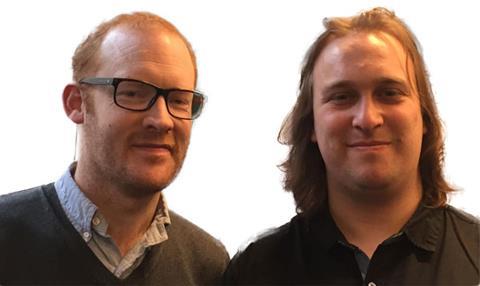Dr Will Pettigrew and Dr Edmond Smith of Kent University’s Centre for the Study of the Political Economies of International Commerce (PEIC) explain how they plan to use pioneering research techniques to map the future of innovation in insurance

Trained as historians, with PhDs from Oxford and Cambridge, Will Pettigrew and Edmond Smith have both spent time working with financial services. Originally a consultant, Will currently works with private companies and public bodies to help them understand the long-term implications of their work. Edmond worked in the City throughout his studies with both innovative start-ups and some of the most venerable institutions in the world. He recently consulted with blockchain start-up SETL and his research into crowdfunding received an award for its methodological innovation.
Looking to the past for a guide to the future might seem paradoxical, but to understand the causes and implications of long-term trends it’s the only method that we have. History offers provocative analogies for present day challenges that also happen to be true.
Our research explores what kinds of organisations are likely to succeed, which will fail, and what qualities they need to make it through. An essential element for all of the greatest successes is a culture of innovation.
To be innovative requires more than a short-term strategy for digitisation, more than the occasional briefing about blockchain, and a hell of a lot more than putting beanbags in a meeting room.
Embrace innovation
For companies to flourish in the coming decades, innovation cannot be an after-thought in board meetings. It needs to be embraced. Understanding how to build an effective culture of innovation will be vital for having the right conversations, attracting the right talent, and building the right business strategy.
As the term ‘fourth industrial revolution’ increasingly becomes part of public dialogue about the impact of new technologies it’s difficult not to look back at its previous incarnations. In January, Klaus Schwab, the founder of the World Economic Forum, commented that “we stand on the brink of a technological revolution that will fundamentally alter the way we live, work, and relate to one another”. This is not scaremongering or fantasy: the world is changing, and it’s changing quick.
People drive revolutions
For insurance, these seismic shifts could remake the way companies function, change the way people work and live, and require completely new types of products that can hardly be imagined at this time.
But innovation doesn’t appear out of nowhere – people drive revolutions. So what can we learn from previous innovation revolutions? What is the relationship between consumers and technological change? How do companies drive innovation? Who manages to ride the waves of innovation and who is left in its wake? And finally, what sort of corporate culture can handle these revolutionary changes, embrace the unknown and bring it to heel?
Cultural balance
The struggle to find that perfect cultural balance that will drive innovation, new ideas, and hopefully higher profits is a concern at the heart of many businesses – but it is by no means a new phenomenon. At PEIC we use the past to understand how corporations can function, how they can develop, how they can innovate, and what role they can play within their own societies and the wider world.
Over the coming months, our blogs will present a long-term perspective on building cultures of innovation. We will assess changing ideas regarding innovation from the foundations of insurance to the present day. You will be presented with an alternative paradigm for thinking about how and why your company can innovate.
Mapping innovation
To bring the past and present together our work with Insurance Times will also include a research project to map innovation in insurance. At the upcoming Innovation & Disruption conference, we’ll be analysing the innovation demography of the industry. We’ll be looking at the people who make the most effective and innovative teams.
Viewing the conference as a microcosm for innovative insurance and using some of the most creative methodologies in academia, we’ll draw some conclusions about the best ways to construct innovative teams. Our job is not to explain the past, but to give you a guide to the future.







































No comments yet